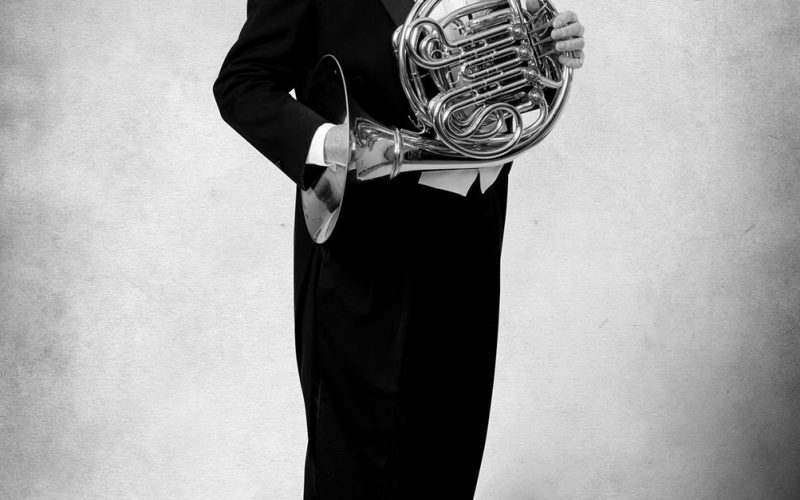Bruce Schultz says he “can’t really claim that music chose me. It was more of a team effort.”
Schultz, a native of Wichita, Kan., and now principal horn for the Symphony of Northwest Arkansas, the Tulsa Symphony Orchestra and the Tulsa Opera Orchestra, says his family was musical, and his grandfather was a music education professor at the University of Oklahoma.
“We all grew up with classical music at home,” he says. “I still have the legendary original boxed set of Beethoven Symphonies performed by Arturo Toscanini and the NBC Symphony that my parents owned as I was growing up. It was just understood that we would all play instruments. For financial reasons, instruments furnished by the school were preferred, so mine was the horn, my older sister played the viola, and my younger brother played the double bass. We had the good fortune of being in schools that had good music programs. Once begun, music became a lifelong passion. It was just natural. So in a sense music was chosen for me, but also chose me.”
Schultz will solo on Mozart’s dynamic Horn Concerto No. 2 when SoNA begins its 2018 “second season” on Jan. 27. Last week, he took a few minutes to answer some questions for What’s Up! about the music he’s playing offstage.
Q. Tell me, please, about SoNA’s ImagiMusic program?
A. The ImagiMusic program is unlike any educational program I have experienced. What is unique about it is how it integrates musical elements with language and mathematics. For example, rhythm and meter are very quantitative elements. If a whole note has four beats, a one-beat note is a quarter note, a half beat note is an eighth note, and so on. And as anyone who watches television or movies knows, music is one of the most effective ways of portraying emotions such as joy, sadness, fear, or anger. We discuss syllables, how words suggest tempos and rhythms, and how visual images can be depicted using words and music.
Q. What encourages you to take music to young listeners?
A. There are many reasons to involve children in music. I have seen an interest in music keep students involved in school, keep them from negative associations, and introduce problem-solving techniques that are applicable to other areas of life. When I was in school, the band was a close-knit and very supportive environment. [The ImagiMusic] concepts are being applied by fourth graders in Northwest Arkansas, usually in conjunction with applying vocabulary words. Most of the students really enjoy the work. I hope this experience helps them with the more complex tasks they will encounter in years to come. This is a special program that should be expanded so that more students can benefit.
Q. What do you hope your performance delivers to the SoNA audience?
A. A sense of what is possible from the musicians they see on stage. Concert-goers may not be entirely familiar with the level of individual musicianship SoNA musicians bring. Another is the range of styles and the images evoked by Mozart in this concerto. From the lyrical-but-technical first movement to the operatic second movement and ending with the rustic, humorous, and almost programatic Rondo, Mozart covers an amazing amount of ground in a relatively short work. (Program music is music that tells a story or a narrative. Mozart did not typically write music that was programatic.) A third would be a chance to hear the horn up close and personal. The horns ordinarily sit at the back of the orchestra and are therefore the most distant from the audience. Solo works and chamber music change that.
— Becca Martin-Brown
bmartin@nwadg.com
FAQ
SoNA Masterworks II:
Mozart & Mendelssohn
WHEN — 7:30 p.m. Jan. 27
WHERE — Walton Arts Center in Fayetteville
COST — $30-$52
INFO — 443-5600
BONUS — Prior to the concert, ticket holders are invited to attend a pre-concert Creative Conversation with Maestro Paul Haas and SoNA musicians at 6:30 p.m.



